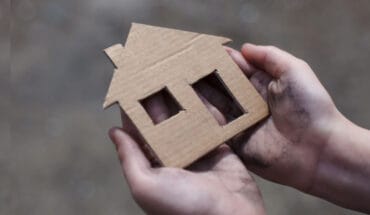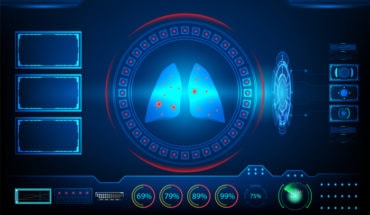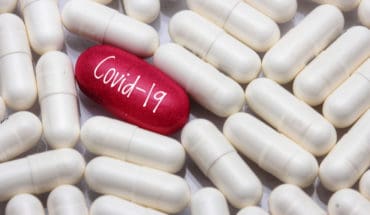The Yemen is an ancient and tribal country situated at the southern end of the Arabian Peninsula. It was originally known as Arabia Felix, or ‘Fortunate Arabia’, but 50 years ago it was a divided country. The northern part, with its capital at Sana, was ruled by an Imam, who although having some religious function, was essentially an inherited monarch. His grandfather had been the Imam Yahya during whose rule the Yemen had been consolidated. The southern part had become a Marxist state, the People’s Democratic Republic of Yemen. At the present time the Yemen is a united country, hitting the headlines mainly for harbouring terrorists, but in 1963 the northern part was experiencing a civil war. The royalist forces of the Imam were trying to fend off the republican rebels who were supported by Colonel Nasser of Egypt.
The International Red Cross had set up a tented hospital in the Yemeni desert south of the Saudi Arabian town of Najran. Its purpose was to provide medical support to those Yemenis injured during the Civil War but, in view of the fact that most of the fighting and bombing by Egyptian airplanes occurred up in the surrounding mountains, few serious casualties survived to arrive in the hospital. Medical support was however sought by ordinary Yemenis for all manner of medical conditions.
The Red Cross wished to have an international flavour among its staff, and so recruited to some extent in the United Kingdom. Two of us students, at what was then Guy’s Hospital Medical School, asked the Dean for permission to go and work as “Junior House Doctors” at the hospital. There was no such thing then as “elective appointments” in the clinical curriculum, but he agreed to our going for just over three months missing part of our psychiatry appointment and half of ophthalmology. It was the beginning of elective periods becoming part of the clinical curriculum.
The Yemen is within the tropics but the Western side lies at about 6000 feet above sea level and its climate is very acceptable. The sun is hot during the day but the nights get cool and each year it is touched by the monsoons which bring rain sufficient to cause flash floods in the Wadis. We were sent off to Moss Bros to get kitted out for all appropriate gear except for a pith helmet. We travelled to Beirut in a VC10 airliner and from there to Jeddah in Saudi Arabia in a modest Middle East Airline Dakota, Finally we landed on the sands at Uqd outside the hospital on the floor of a United Nations Caravelle Canadian Air Force freight carrier.
The tented hospital was largely staffed by Swiss doctors, nurses and support personnel doing their obligatory national service, but at any one time there were at least two of us medical students from the UK. Apart from the tents there was only one solid structure and that was the operating theatre, or Clinobox as it was known. This had air conditioning and we were able to spend half a day from time to time working in its environment,providing welcome relief from the desert heat. There was no air conditioning within the tents however and at night it was often more comfortable to sleep out under the stars. We were encouraged to blend in with our surroundings which time allowed us to do.
There were however casualties from battle. Fractured femurs were managed by traction and other broken bones where possible managed with plaster casts after reduction to an appropriate position. Apart from compound fractures, open surgery on bones was far too dangerous in the conditions existing within the hospital. The only Egyptian patient was a prisoner of war or possible deserter who had suffered a major pelvic injury necessitating a colostomy and a permanent catheter. Surprisingly the sepsis involved was controlled by judicious use of debridement and a very limited stock of antibiotics. What happened to him eventually when the hospital closed I do not know. He was regarded by the Egyptians as a deserter to be shot on his return, while the Yemenis regarded him as enemy to be similarly dispatched if the opportunity arose.
The majority of the patients coming to the hospital had conditions unrelated to the war. Hundreds were seen at the Polyclinic, a sort of Casualty/General practice department, sited at the entrance to the tented encampment. Chronic anaemia associated with a whole variety of intestinal worms was common and in particular the dog tape worm producing hydatid disease was frequently seen. Bilhazia (schistosomiasis) affecting the bladder and intestines was common, as was tuberculosis. This would often present as a coldabscess sometimes with the marks of cautery, the local treatment for chronic pain. The most horrifying condition that I saw and have never seen again was leprosy. In many of these cases there was nothing that we were able to do in the long term. Occasionally snake bites were seen but no anti-serum was available and dental problems were common but no orthodontics was possible. Painful teeth were simply removed.
In fact most visitors to the Polyclinic were not looking for treatment but rather social cohesion and perhaps a mild curiosity about their condition or deformity. Many patients were seen with inguinal hernia but very few wanted anything done about it, much to the frustration of our resident Swiss surgeon.
Life was sometimes spiced up with dramatic moments as when I had to rush to the ward tent to see a patient who had had an amputation of the upper leg following a severe blast injury, to find him ex-sanguinating from a torrential secondary haemorrhage from the amputation stump. In fact he made a remarkable recovery following further surgery. The Yemenis who had survived to adulthood were a robust group.
There were lady patients in the hospital – a few with injuries but most with womens’ complaints. They were looked after by two Swiss lady medics, and the only occasion I remember seeing the patients was when a snake got into their ward tent and they left screaming in terror. There was very strict segregation between the men and the women.
Nurses in the conventional sense were not needed. Each patient had with them many family members who attended to their personal needs such as feeding and movement, and at least two would sleep under the camp bed at night and raise the alarm if anything untoward happened. Dressings and things such as intravenous drips and catheters were looked after by us “pseudo doctors”.
The staff themselves were not immune to injury or illness. On one occasion the hospital’s Swiss Quartermaster decided to taunt a scorpion with a ring of fire. Contrary to expectations the scorpion escaped and stung him such that he had to be hurriedly evacuated by air to Jeddah. On another occasion one of my colleagues developed a nail infection on his index finger which very rapidly involved the terminal phalynx producing osteomyelitis. He was hurriedly returned to England where he made a speedy and complete recovery.
The patients’ food was provided by the relatives and friends, but our meat came on the hoof. There were always a few sheep tied up in the camp environment which would regularly disappear and turn up on the table suitably prepared. Fresh fruit and vegetables were brought in from the local Saudi town of Najran, but although camel milk was available there was some uncertainty about its safety. We had to make do with processed milk but water came from one of the local wells in the desert. These wells were shared with the camels, goats and sheep and chlorine tablets were added to make it suitable for human use. Even so we were very careful about salads but I do not remember any significant problem arising during my time there.
Under normal circumstances it would have been impossible for the International Red Cross to bring alcoholic drinks into the Yemen, but camped up on a sand-dune about a mile away was a United Nations peacekeeping group. This was soon deemed a waste of time and it was disbanded, but the large quantity of gin, vodka, whisky and mixers which they had been able to fly in was donated to the International Red Cross. There was more than enough to keep us happy in the evenings at least until I left.
Although we were often visited by Western photographers on their way home from covering the war we never saw any journalists despite articles appearing in the Western press. The story was that they wrote their copy in the bars of Beirut based on information filtering through via photographers and others. There were no obvious embedded journalists in that campaign.
On a few occasions the Imam’s uncle, the Emir Abdullah, who was the general in charge of the royalist forces, would pass by the hospital seeking some medical advice from the Swiss physician with his retinue and several large boxes of George V gold sovereigns and silver Marie Theresa dollars or thalers. Payment would be made to the Red Cross with a small handful of appropriate coins.
At the end of three months, after what for me had been an exciting and unrepeatable experience, the whole camp was replaced by a new influx of personnel. Since the United Nations had left we had to drive across the desert to Najran to catch a plane to Jeddah and beyond. We sadly parted and went our various ways, but the British Red Cross, which were responsible for my journey back to London, clearly felt that I was in need of some luxury after all my privations, and flew me first class in a BOAC VC10 back to Heathrow.
- Patient case studies - 21st April 2016
- Signs of ingested TB - 23rd March 2016
- A ground-breaking elective in the Yemen – over 50 years ago. - 13th March 2016







